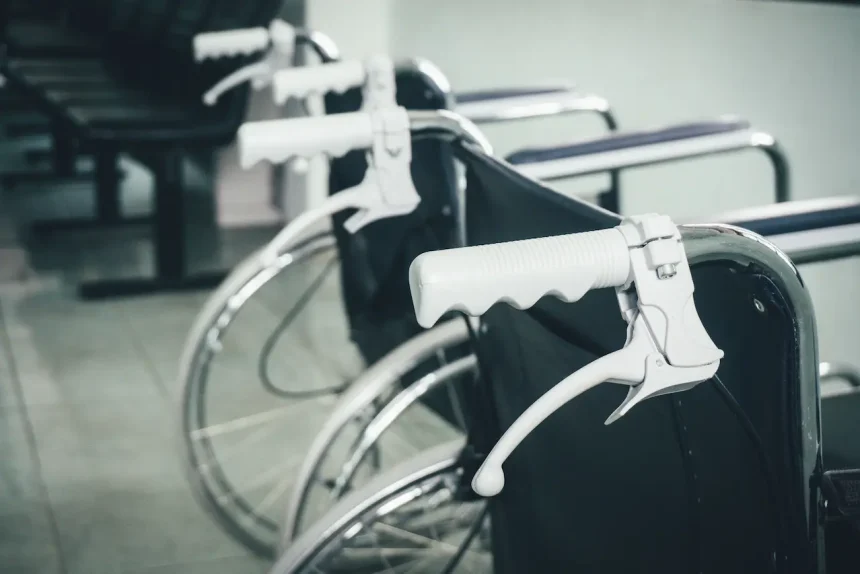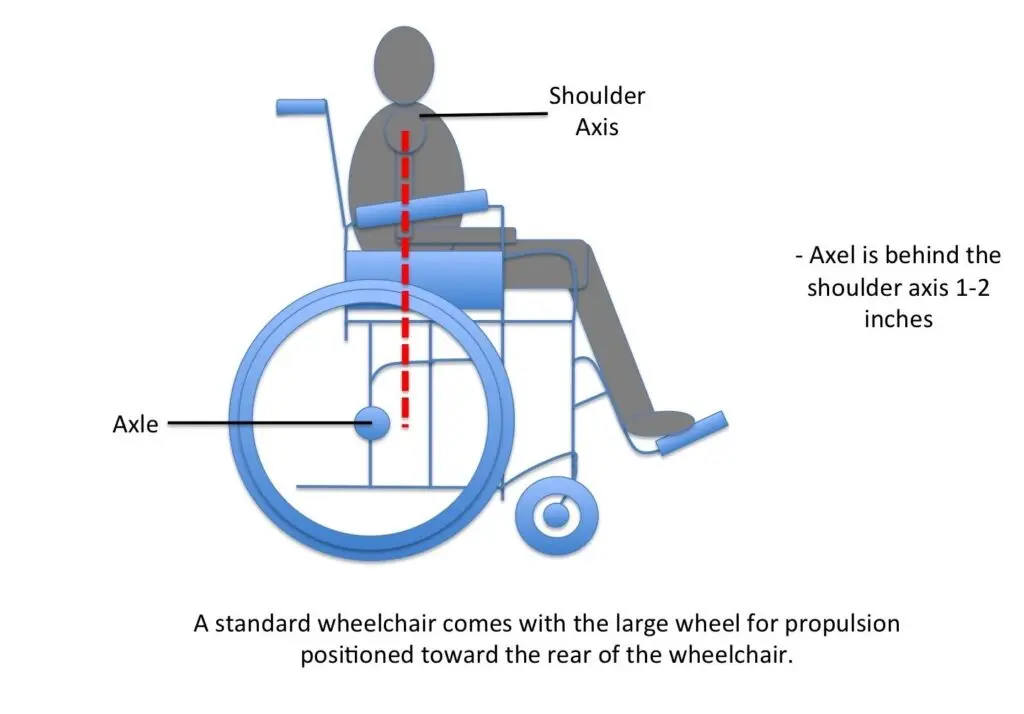Types of Wheelchairs
There are various types of wheelchairs designed to accommodate individual needs based on the user’s abilities and specific diagnoses.
- Power Wheelchair: Operates electronically with controls like joysticks or head switches. Suitable for individuals like those with advanced multiple sclerosis needing assistance navigating a shopping mall.
- Manual Wheelchair: Propelled manually by the user or pushed by an assistant. It’s important to lock brakes for safety during transfers.
- Lightweight Wheelchair: Made from lighter materials and foldable, ideal for frequent travelers, such as a person with spinal cord injury maneuvers it into their car.
- Standing Wheelchair: Features hydraulic lifts to support standing, benefitting users with muscular dystrophy in performing tasks like reaching overhead cupboards.
Wheelchair Fitting
Proper wheelchair fitting involves measuring specific body landmarks to ensure comfort and functionality. A comprehensive wheelchair assessment form can guide this process.
Standard Wheelchair Dimensions
Fitting considers dimensions such as seat width, depth, back height, and armrest height. For instance:
- Seat Width: Measure the hips at their widest part and add 2 inches.
- Seat Depth: From buttocks to popliteal fossa, subtract 2 inches from the longest leg measurement.
- Back Height: Depending on trunk control and activity level, measure from the seat surface to the mid back or shoulder top.
Hemi Height Wheelchair vs Standard
The hemi-height wheelchair has a lower seat height (17.5″) compared to the standard wheelchair height (19.5″), aiding users who propel with their feet. Understanding these differences helps in choosing the right chair.
Wheelchair Attachments
Attachments enhance functionality, offering solutions like:
- Pelvic Support Strap: Stabilisers pelvis alignment, helping conditions like Alzheimer’s disease by preventing tilting.
- Wheelchair Tray: Affixed for activities like eating or working, utilized notably by individuals with cerebral palsy.
- Posey Drop Seat Cushion: Keeps hips aligned by preventing adduction, aiding in recovery from conditions like hip fractures.
Wheelchairs for Specific Diagnoses
Certain adaptations significantly benefit specific conditions:
- Hip Replacement: Reclining back and pommel cushions to maintain required hip angles post-surgery.
- Spinal Cord Injury: Use of contoured seating, positioning straps, and potentially power wheelchairs for cervical injuries.
Standard Wheelchair Measurements
Consult our detailed size charts when considering wheelchair dimensions. Understanding the varied specifications helps in choosing the right model for diverse needs such as wide-width adults or children.
Want detailed practice tips to ace the NBCOT® exam? Join now for full access!
What are the different types of wheelchairs available?
There are various types of wheelchairs such as power wheelchairs, manual wheelchairs, lightweight wheelchairs, and standing wheelchairs, each designed to accommodate specific user needs and abilities.
How do you ensure the proper fitting of a wheelchair?
Proper wheelchair fitting involves measuring seat width, depth, back height, and armrest height using specific body landmarks to ensure comfort and functionality.
What are the advantages of a hemi-height wheelchair over a standard wheelchair?
A hemi-height wheelchair has a lower seat height of 17.5 inches, which aids users who propel the wheelchair with their feet, compared to the 19.5 inches seat height of a standard wheelchair.
What attachments are beneficial for enhancing wheelchair functionality?
Attachments like pelvic support straps, wheelchair trays, and Posey drop seat cushions can enhance functionality, offering stability, convenience in activities, and improved posture.
Which wheelchair adaptations are beneficial for specific diagnoses?
Adaptations like reclining back and pommel cushions for hip replacements, and contoured seating with positioning straps for spinal cord injuries significantly benefit those conditions.




